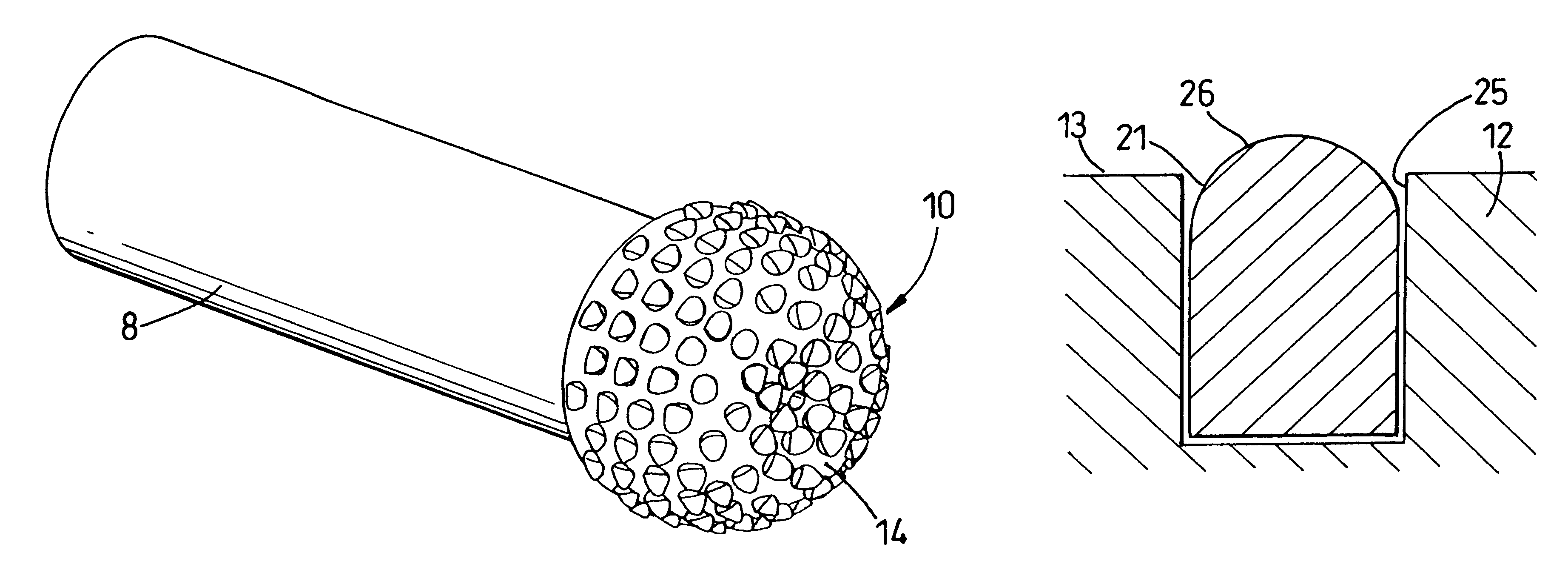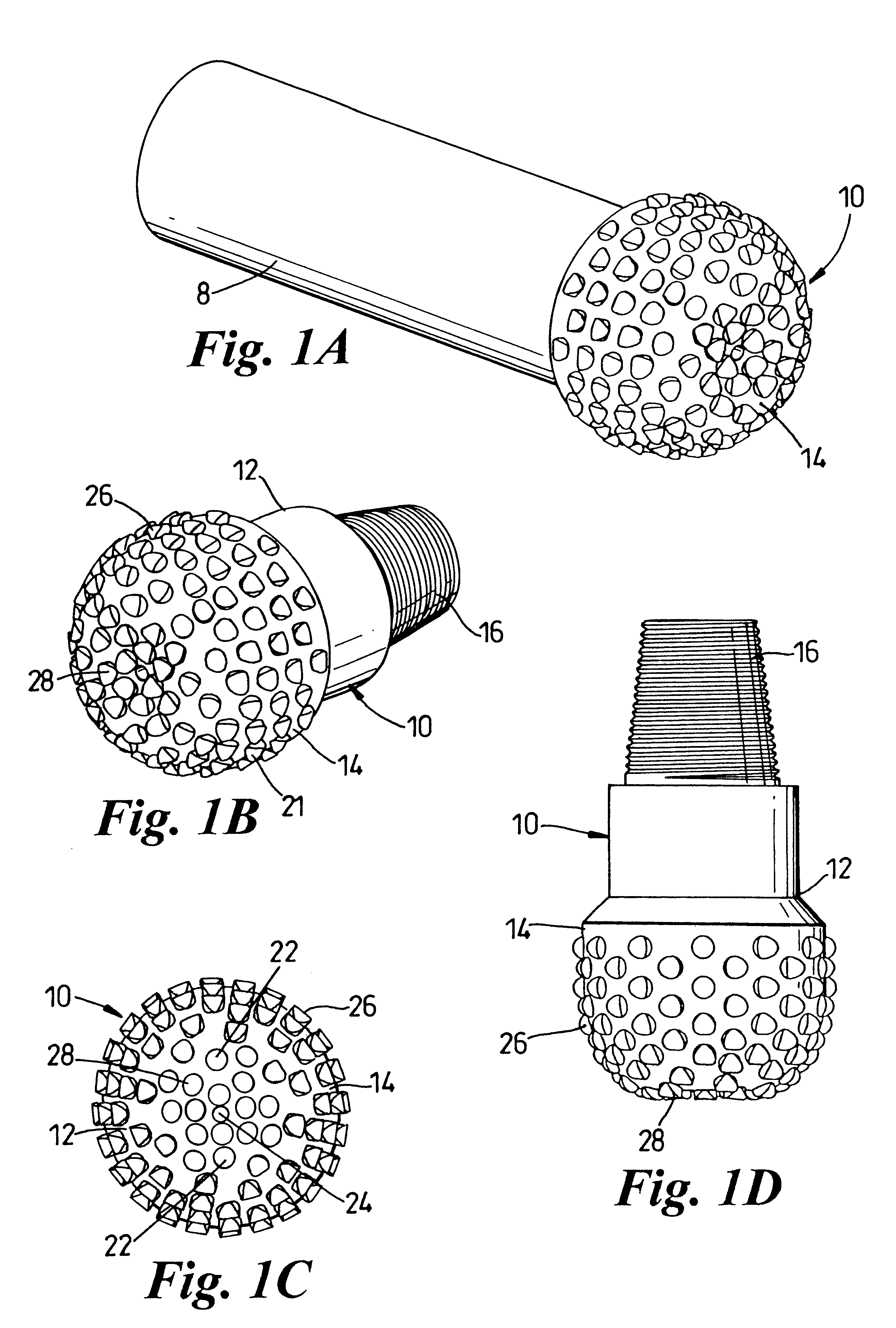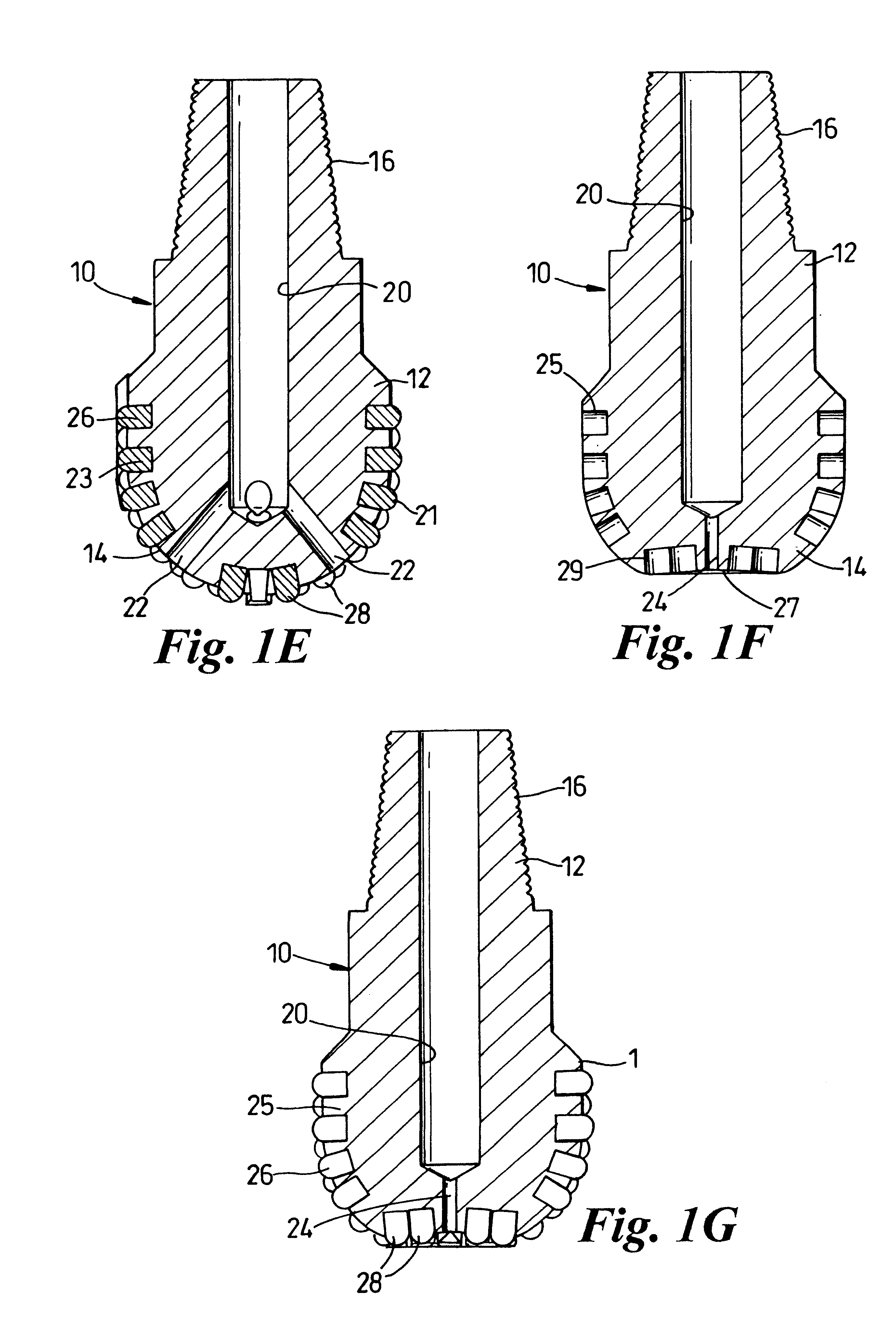Mills for wellbore operations
a milling and wellbore technology, applied in the direction of borehole/well accessories, drilling pipes, drilling rods, etc., can solve the problems of difficult verification of adhesion quality, unsatisfactory cracks, and limited carbide selection
- Summary
- Abstract
- Description
- Claims
- Application Information
AI Technical Summary
Benefits of technology
Problems solved by technology
Method used
Image
Examples
Embodiment Construction
FIGS. 1A-1G show a mill 10 according to the present invention with a mill body 12 having a lower enlarged bulb 14 and an upper threaded connector 16 for threadedly connecting the mill 10 to a correspondingly threaded tubular 8 which may in turn be connected to a tubular string (not shown) run down into an earth wellbore. The tubular 8 and the tubular string have fluid flow bores for directing fluid pumped from the earth surface under pressure to a fluid flow bore 20 of the mill 10.
A plurality of side ports 22 and a central port 24 are in fluid communication with the flow bore 20 so that fluid may be jetted therefrom to facilitate milling, cooling, and the movement of milled cuttings and debris away from the mill 10.
The bulb 14 of the mill 10 has a plurality of side recesses 25 into which are press fit a plurality of corresponding side inserts 26. The lower end of the bulb 14 has a slightly indented central portion 27 and a plurality of end inserts 28 press fit in corresponding reces...
PUM
 Login to View More
Login to View More Abstract
Description
Claims
Application Information
 Login to View More
Login to View More - R&D
- Intellectual Property
- Life Sciences
- Materials
- Tech Scout
- Unparalleled Data Quality
- Higher Quality Content
- 60% Fewer Hallucinations
Browse by: Latest US Patents, China's latest patents, Technical Efficacy Thesaurus, Application Domain, Technology Topic, Popular Technical Reports.
© 2025 PatSnap. All rights reserved.Legal|Privacy policy|Modern Slavery Act Transparency Statement|Sitemap|About US| Contact US: help@patsnap.com



